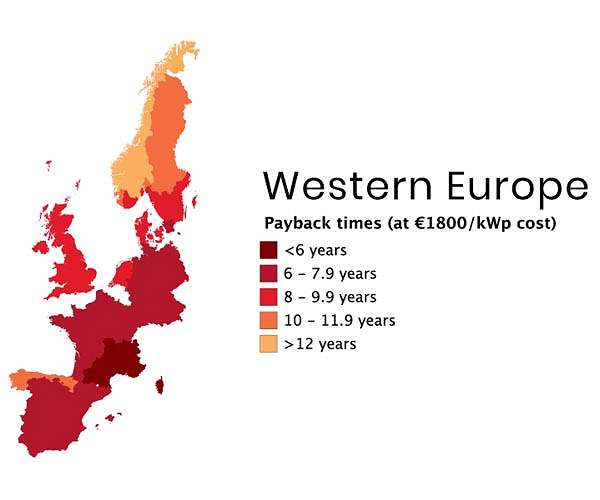Solar -Power surpasses the coal in the EU for the first time
Solar caught up with coal in the electricity production of the European Union in 2024, with the share of renewable energy sources up to almost half of the energy sector of the block, according to a report released on Thursday.
In the meantime, gas generation fell for the fifth year in a row and fossil powered to a “historic low”, said climate think tank Ember Ember in its European Electricity Review 2025.
“The European Green Deal has supplied a deep and rapid transformation of the EU energy sector,” said the think tank.
“Solar remained the fastest growing power source of the EU in 2024 and rose above coal for the first time. Wind energy remained the second largest power source of the EU, above gas and below nuclear.”
In general, strong growth in solar and wind has increased the share of renewable energy sources to 47 percent, an increase of 34 percent in 2019.
Fossil fuels have fallen from 39 to 29 percent.
“An increase in wind and solar generation is the main reason for decreasing fossil generation. Without wind and solar capacity since 2019, the EU would have imported 92 billion cubic meters more fossil gas and 55 million tonnes more hard coal, which costs EUR 59 59 billion, “said the report.
According to Ember, these trends are widespread throughout Europe, where the solar power is progressing in all EU countries.
More than half has now eliminated coal, the most polluting fossil fuel, or its share reduced to less than five percent of their energy mix.
“Fossil fuels lose their grip on EU energy,” says Chris Rosslowwe, main author of the report.
“At the start of the European Groene Deal in 2019, few thought that the EU energy transition would be where it is today: wind and solar energy relegated coal to the margins and push gas in decline.”
– battery storage –
But Rosslowwe warned a lot of work.
“We must speed up our efforts, especially in the wind energy sector,” he said.
The Europe’s electricity system will also have to increase its storage capacity to get the most from renewable energy sources, which by definition are intermittent, he added.
In 2024, abundant solar energy helped to lower prices in the middle of the day, sometimes even resulting in “negative or zero price hours” as a result of an abundance of demand compared to the question.
“An directly available solution is a battery that is laid together with a tanning factory. This gives solar energy producers more control over the prices they receive and helps them to prevent them from being sold for low prices in the middle of the day,” said The report.
The think tank suggested that consumers could lower their bills by moving the use to periods of abundance (smart electrification), while battery operators can earn income by buying electricity when the prices are low and selling back when the demand peaks.
Batteries have been significantly advanced in recent years, with installed capacity in the EU doubling up to 16 GW in 2023, compared to 8 GW in 2022, according to Ember.
But this capacity is concentrated in just a small number of countries: 70 percent of the existing batteries were in Germany and Italy at the end of 2023.
“More storage and demand flexibility is needed to maintain growth and for consumers to pick the full benefits of abundant solar energy,” Ember said.
“After a challenging few years before the wind energy sector, additions will grow, but not by sufficient to achieve EU objectives. Closing this gap requires continuous policy implementation and political support, so that the number of additions between now and 2030 is more than double those in recent years.


